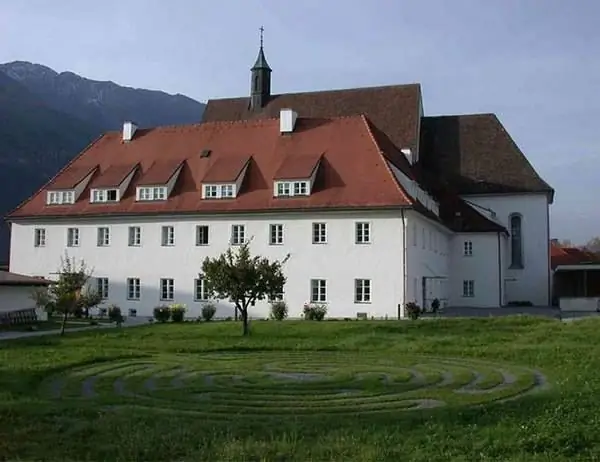
Description of the attraction
The small town of Telfs is widely known in Austria as the city in which the Eyup Sultan Mosque is located - the second building of this kind in the country (the first was built in the second half of the 20th century in Vienna). However, most tourists come here to see the vast Franciscan monastery complex, consisting of a residential building for monks, a temple, a cemetery founded west of the church in 1786, and a war memorial created by sculptor Andreas Einberger in 1921 and expanded by architect Hubert Fragner through 36 years.
The Franciscan monastery was founded in Telfs at the beginning of the 18th century on the initiative of the priest Franz Oberperger and with the financial support of representatives of some noble families. The buildings of the monastery and the church were built in 1703-1706 by Father Gregor Carneder. For two centuries the Franciscans carried out pastoral work in Telfs and the surrounding villages. After the decree of Emperor Joseph II on the dissolution of some monasteries, the local monastery was practically abandoned: only six monks lived here. In the 19th century, the Franciscans returned to their monastery at Telfs. In the same period, some changes were made to the architectural appearance of the monastery complex. In 1824, another building was built, decorated with frescoes on the theme of the life of St. Francis by Leopold Pulacher. In 1867-1871, the reconstruction of the monastery church of the Immaculate Conception took place. In 1904, on the occasion of the 200th anniversary of the monastery complex, the artist Joseph Pfefferl decorated the facade of the temple with original mosaics.
In February 1941, the monastery was rebuilt into apartments for Wehrmacht soldiers. The monastery remained active until 2004. Now it houses a spiritual center for the laity.






